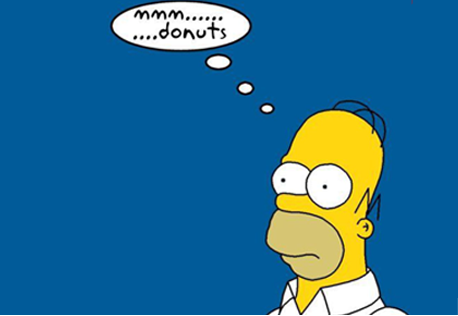Here are some things I think I am thinking about.
1) Shadow Stats Debunked! It’s been a huge couple of weeks here at Pragmatic Capitalism when it comes to official myth busting. First we had the money multiplier officially being denounced by the Fed and now we have Shadow Stats officially being debunked. At this rate I won’t have anything to write about in the coming years. Maybe that’s a good thing? Anyhow….
Measuring inflation is hard. Everyone’s experience of inflation is different and it’s virtually impossible to get real-time pricing of a basket of goods that actually reflects the average consumer basket of goods. So it’s super easy to criticize any measure of inflation. Plus, most of us are biased and have no actual idea what the cost of all this stuff is. We mostly just see gas prices changing, because they’re posted everywhere, and think to ourselves “gee, there’s inflation/deflation”. I’m oversimplifying, but all of this requires some oversimplification because it’s all somewhat imprecise.
Anyhow, there’s a whole cottage industry of price measurements that supposedly give us the “real” rate of inflation. And this industry exists because people are skeptical of the government and the way they measure stuff. Which is warranted. Because even measures like CPI are imperfect. Because measuring inflation is hard. But the one source that most people turn to for “alternative” inflation measures is Shadow Stats. Regular readers will know of Shadow Stats from my regular updates on their deflating subscription service. Yes, the prices, IN USD, have been deflating for 15 years. It’s amazing really. Imagine predicting hyperinflation almost every year for 20 years while selling a service denominated in USD that is deflating the whole time.¹ Meanwhile the demand for that service continues to rise. What a business!²
Well, it turns out that the subscription price wasn’t the only thing that was deflating. According to Tim Lee at Full Stack Economics their analysis is based on a calculation error. In summary, Shadow Stats constructed their alternative measure by taking a 5.1% difference between CPIU and CPIURS (the BLS’s retroactive adjustment) and misinterpreted it as an ANNUAL difference when it was in fact a CUMULATIVE difference. As Tim notes, this is a gobsmacking error. I’ve pointed out a lot of these discrepancies over the years, but it’s nice to see an official debunking. Kinda reminds me of the famous Reinhart & Rogoff miscalculation for those who remember.
Long story short – yes, the CPI is an imperfect measure of inflation because there’s no such thing as a perfect measure of inflation. But when you really dive deep into the methodology and its consistency across other data you’ll tend to find that it’s a lot more right than wrong. And that’s especially true when compared to “alternative” measures that claim the data is dramatically understated.
That’s all for today. I mean, who needs two other things to think about when we no longer have to get brain damage reading conspiracy theories about Shadow Stats? Go have a beer and celebrate. If you’re close by, come get me. I’ll buy you a beer at the not so transitory prices we’re currently seeing.
NB – One thing I love about CPI data is, when it comes in at 6.2%, conspiracy theorists love to cite it. But when it was low for 10+ years all we heard was how it’s manipulated lower. Oh, come on!
Related:
- Shadow Stats Debunked
- Addressing misconceptions about the Consumer Price Index, Monthly Labor Review, August 2008
- Other critiques of Shadow Stats
¹ – There seems to be hyperinflation in my age. It’s been 10 years since I wrote that popular post on the deflation in hyperinflation predictions. Where did the time go?
² – I still can’t believe I haven’t spun up some Federal Reserve conspiracy newsletter. I feel like I could have been really good at selling scary narratives using complex sounding stories about all the Fed mechanics.
Mr. Roche is the Founder and Chief Investment Officer of Discipline Funds.Discipline Funds is a low fee financial advisory firm with a focus on helping people be more disciplined with their finances.
He is also the author of Pragmatic Capitalism: What Every Investor Needs to Understand About Money and Finance, Understanding the Modern Monetary System and Understanding Modern Portfolio Construction.

